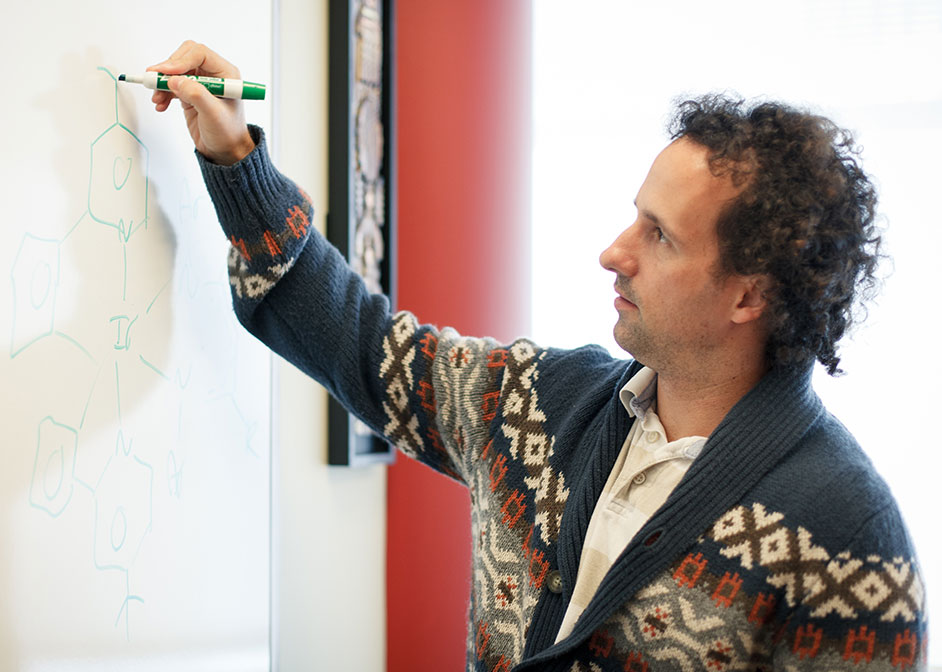Projects Focus on Interaction of Light with Organometallic Compounds
Scientists have made big advances in light-emitting diodes and other lighting challenges, but fundamental questions remain.

An assistant professor of chemistry at the University of Houston’s College of Natural Sciences and Mathematics has received a five-year, $589,000 National Science Foundation CAREER Award to seek answers.
Thomas Teets, an experimental chemist whose work is focused on synthetic strategies for producing photoactive organometallic compounds, will tackle three topics:
- Developing compounds that efficiently emit blue light and provide long-lived lighting for organic LED color displays
- Developing compounds that emit in the near infrared spectrum, efficiently producing low-energy light
- Developing photocatalysts for organic synthesis capable of light-induced electron transfer
“We’re developing tools that will allow synthetic chemists to use light to promote synthetically useful reactions,” Teets said. “We’re designing new catalysts, compounds that absorb light and promote chemical transformations.”
NSF CAREER awards are granted to highly promising junior faculty members who exemplify the role of teacher-scholars through “outstanding research, excellent education and the integration of education and research.”
Organic LED displays – used in signage, television screens and other electronics – use a combination of red, green and blue pixels to generate life-like images. But stable, efficient materials capable of emitting blue light have proven elusive, Teets said, noting that light-emitting materials which function at the blue-light end of the spectrum suffer both from poor stability and poor efficiency.
“When you promote these compounds to a higher-energy state, stability is always a concern, especially for blue emitters,” he said.
Similarly, he said there is a need for more efficient compounds capable of emitting light in the near infrared spectrum, which is desirable for medical devices, night-vision equipment and other products.
In addition to the research component, Teets will spearhead several educational projects: a lab module to introduce children from kindergarten through high school to the ways in which light interacts with chemical compounds and a public lecture series designed to introduce art enthusiasts to the chemical principles behind the creation of colors.
That is the basis of creating pigments used in visual art, he said. “There is a lot of overlap in the chemistry and art worlds,” he said. “This lecture series could help bridge the gap between science and the arts, looking at how we use chemistry to effect art.”
- Jeannie Kever, University Media Relations